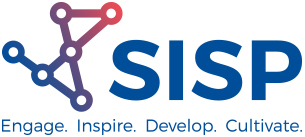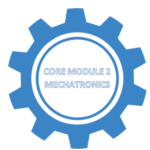 The Mechatronics modules 1 and 2 form 50% of the core units which represent 25 hours of indicative study. Mechatronics is designed for students to develop a deep understanding of mechatronic systems through to completion of hands-on practical projects. To satisfy the requirements of these modules, students must undertake a range of experimental, group work and inquiry-based learning activities that occupy the majority of the time. These activities should be used to develop a deep knowledge and understanding of the integration of STEM into mechanical, electrical and robotic systems.
The Mechatronics modules 1 and 2 form 50% of the core units which represent 25 hours of indicative study. Mechatronics is designed for students to develop a deep understanding of mechatronic systems through to completion of hands-on practical projects. To satisfy the requirements of these modules, students must undertake a range of experimental, group work and inquiry-based learning activities that occupy the majority of the time. These activities should be used to develop a deep knowledge and understanding of the integration of STEM into mechanical, electrical and robotic systems.
To complete Mechatronics 1 and 2 you need to complete the following areas of study;
Mechatronics 1
Mechatronics 2
- Mechatronics and control technology
- Programming & computations
- Design mechatronic solutions for a range of applications
What is Mechatronics?
 Mechatronics, which is also called mechatronics engineering, is a multidisciplinary branch of engineering that focuses on the engineering of both electrical and mechanical systems, and also includes a combination of robotics, electronics, computer, telecommunications, systems, control, and product engineering.[1][2] As technology advances over time, various subfields of engineering have succeeded in both adapting and multiplying. The intention of mechatronics is to produce a design solution that unifies each of these various subfields. Originally, the field of mechatronics was intended to be nothing more than a combination of mechanics and electronics, hence the name being a portmanteau of mechanics and electronics; however, as the complexity of technical systems continued to evolve, the definition had been broadened to include more technical areas.
Mechatronics, which is also called mechatronics engineering, is a multidisciplinary branch of engineering that focuses on the engineering of both electrical and mechanical systems, and also includes a combination of robotics, electronics, computer, telecommunications, systems, control, and product engineering.[1][2] As technology advances over time, various subfields of engineering have succeeded in both adapting and multiplying. The intention of mechatronics is to produce a design solution that unifies each of these various subfields. Originally, the field of mechatronics was intended to be nothing more than a combination of mechanics and electronics, hence the name being a portmanteau of mechanics and electronics; however, as the complexity of technical systems continued to evolve, the definition had been broadened to include more technical areas.
Source Wikipedia
The iSTEM Process
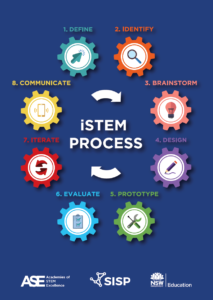
The iSTEM process was developed by the Cessnock Academy of STEM Excellence (CASE) as part of the STEM Industry School Partnerships (SISP) program. It provides consistent language across K-12 schools based on an industry-recognised engineering design process and scaffolds the understanding and application of design thinking.
The SISP program is developing teaching and learning units to embed the iSTEM process into the curriculum. There are different versions of the iSTEM process that vary in the number of cogs. The purpose of the different versions is to allow for the process to be adapted to different stages and types of problem-solving activities. Teachers are encouraged to adapt the iSTEM process to various aspects of their teaching of STEM.
A series of poster designs are available for display in schools and can be found by clicking the button below
The iSTEM process has been designed to assist in the learning and teaching of STEM from K – 12. It is recommended that the iSTEM process be taught as part of the Mechatronics Unit. Embedding the iSTEM process within teaching pedagogy and learning opportunities allows for student engagement and positive culture for consistent, ongoing learning and improvement, at a variety of levels from Early Stage 1 through to the Secondary stages.
STEM Learning Activities
Suggested STEM Learning Activity 1 – Tetrix Robotics
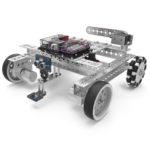 Using the Tetrix robotics kits in groups students complete a series of engineering and robotics construction challenges using the Pitsco Tetrix platform;
Using the Tetrix robotics kits in groups students complete a series of engineering and robotics construction challenges using the Pitsco Tetrix platform;
Prime Kit –
-
- Activity 1 – Think like an Engineer: Build & Run a Robot
- Activity 2 – Drivetrains: Build the Car Bot
- Activity 3 – Drivetrain modifications
- Optional: Drive and Speed Challenge (Students choose one of the 4 activities to complete Activity 6 -9)
Max Kit –
-
-
- Activity 1 – Build the Robot, run the maze
- Activity 2 – Wave the flag
- Activity 6 – Inch Worm
- Optional: Design Challenges (Students choose between challenge 1 – 4)
-
Note: This Unit requires the purchase of a Tetrix Robotics system available for purchase in Australia by Kookaburra Educational Supplies
Click on the resource button below to find resources to support the Tetrix Robotics Project
Suggested STEM Learning Activity 2: – Arbot Robotics
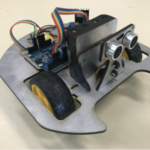 The Arbot is an innovative and highly engaging robot made for teachers by teachers. It’s simple design and almost limitless opportunities for expansion make it an ideal mechanism to both teach beginning students text-based coding and extend advanced students interests in Mechatronics. The Arbot incorporates Arduino, an inexpensive open-source electronics platform which is used internationally at universities to teach electronics, robotics and computer science. The Arbot package includes electronic hardware, software and sample code and troubleshooting media as well as extensive teaching support for use in Stage 4 Mandatory Technology and Stage 5 iSTEM.
The Arbot is an innovative and highly engaging robot made for teachers by teachers. It’s simple design and almost limitless opportunities for expansion make it an ideal mechanism to both teach beginning students text-based coding and extend advanced students interests in Mechatronics. The Arbot incorporates Arduino, an inexpensive open-source electronics platform which is used internationally at universities to teach electronics, robotics and computer science. The Arbot package includes electronic hardware, software and sample code and troubleshooting media as well as extensive teaching support for use in Stage 4 Mandatory Technology and Stage 5 iSTEM.
For teachers and students, the learning curve is steep when entering into the world of mechatronics and text-base coding. Training of staff in the Arbot platform is highly recommended before implementation and Camden Haven High School is available to offer training for interested groups.
Note: This Unit requires the purchase of a Arbot Robotics system available for purchase in Australia by Hayne Robotics
Click on the resource button below to find resources to support the Arbot Robotics Project



